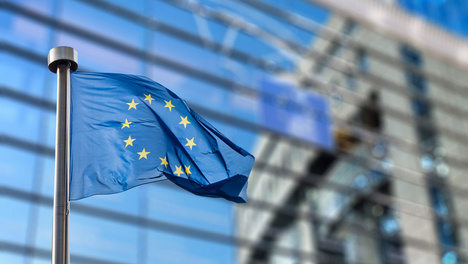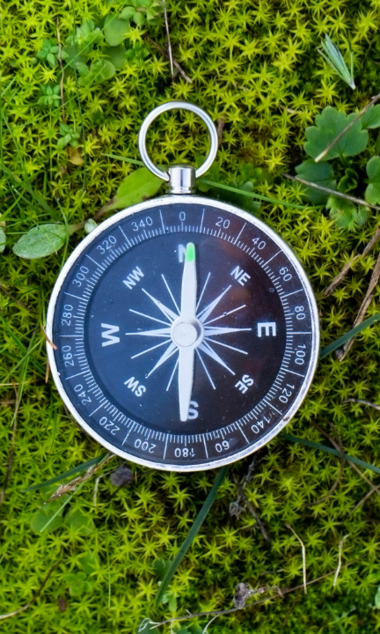
- Blog, Digital Transformation
- Published on: 12.10.2023
- 9:12 mins
How to Comply with the New CBAM regulations
In 2021, EU countries emitted a total of 3.471 million tons of greenhouse gases, primarily in the form of carbon dioxide (CO2). Due to climate change and its effects, global leaders had already adopted the Kyoto protocol in 1997 with the goal of reducing emissions and curbing global warming. In response, the EU introduced the EU Emissions Trading System (EU ETS) in 2005. This system taxes the emissions of certain industries using carbon certificates that can be traded and sold. When companies exceed their allotted CO2 allowances, they can buy additional allowances from other companies.
Because businesses in the EU must pay for CO2 emissions, they are subject to additional costs compared to manufacturers in non-EU countries—putting them at a clear competitive disadvantage. As a result, some EU companies have off-shored their manufacturing operations to countries with less stringent environmental regulations. To address this problem, the European commission developed the new carbon border adjustment mechanism, known as CBAM for short. It will ensure that companies importing goods into the EU will pay tax on the CO2 emissions generated by their production.
In this report, you’ll learn more about the border adjustment mechanism and how MHP can help you make your company CBAM-compliant—and protect the environment in the long-term.
What is CBAM?
The carbon border adjustment mechanism is part of the EU’s “Fit for 55” package, which is also known as the “European Green Deal”. This legislation package was adopted by the EU commission in July 2021; its goal is to make the EU climate-neutral by 2050.
The CBAM regulations supplement the existing EU emissions trading system (ETS) by implementing a carbon pricing system for products produced outside the EU. The legislation is meant to ensure that manufacturing according to EU regulations does not put EU manufactures at a disadvantage.
While the new EU-approved regulations entered into force on May 17, 2023, its implementation began on October 1, 2023. As of that date, businesses subject to the new regulations are obligated to report their CO2 imports. The mechanism is similar to that of EU ETS, but it applies only to the greenhouse gas emissions embedded in the imported goods.
Which businesses are affected?
The CBAM regulation affects EU companies that import high-emission products from non-EU companies. Multiple industries are affected. The following is an overview:
- Iron and steel industry
- Production of cement, fertilizer or aluminum
- Hydrogen production
- Electricity
Both raw materials and products such as screws, sheeting and pipes can fall under the CBAM regulations.
Reporting requirements pose a new challenge for businesses
Between October 1, 2023 and December 31, 2025, a transitional period will begin. During the transition, requirements for importers are limited to the following:
- Registration in the CBAM transitional registry
- Documentation and calculation of the direct and indirect greenhouse gas emissions that occurred as a result of production of the imported goods
- Mandatory submission of a quarterly CBAM report about imported goods
This report must be submitted one month after the end of the quarter, meaning that the first reports must be submitted by January 31, 2024 at the latest.
After the transitional period, which will end on December 31, 2026, the CO2 import tax will go into effect. That means that affected businesses will be required to purchase CBAM certificates to cover the amount of CO2 embedded in the imported goods. To ensure complete transparency, independent auditors will submit a validated report on May 31 each year indicating the required number of CBAM certificates.
Determining the CO2 price of relevant products under CBAM
The price of CBAM certificates will be oriented on the weekly average price of the EU emission trading certificates (EU ETS). Should the exporting country have CO2 pricing in place, and if the fees were paid, the amount will be deducted by EU customs. The number of required CBAM certificates depends on the emissions (CO₂, N2O, HFC) embedded in the imported products.
Good to know: Each CBAM certificate represents one ton of emissions. Businesses can apply for a reduction in the number of required CBAM certificates to account for any CO2 price that was already paid in the country of origin.
What effect will CBAM have on the future of companies with high CO2 emissions?
CBAM regulations require companies with high CO2 emissions to restructure many areas of their businesses, but it also provides new opportunities. Let’s take a closer look at the effects this will have.
Cross-departmental collaboration will be a key factor to success
The CBAM regulations will require businesses to make comprehensive adjustments to their organizational structures and procedures. To prepare accurate reports and make the required payments, they will need to correctly track imported products and assign them to the appropriate customs classifications. Consequently, the customs processing, purchasing and finance departments will need to work together closely.
Intense data analysis and management for precise calculation of emissions values
Precise analysis of the suppliers and countries of origin will be another crucial aspect. Companies will need to take the emission factors in these countries into account, as well as any CO2 price that has already been paid. Determining the correct CO2 emissions for imported products will require intense emissions' data analysis and management. Calculating these values accurately will be critical, as they are the foundation on which future payments will be calculated.
By making CO2 emissions a cost factor, CBAM regulations will have a significant impact on economic dynamics. Companies will need to include CO2 costs in their business models. For example, products that contain screws or sheet metal from non-EU countries could increase in price, because the CO2 emissions created by their production will be taken into account.
Incentivizing export countries
Because any CO2 taxes collected in exporting countries will be deducted from the CO2 import duties assessed by CBAM, the EU regulation will create incentives for export countries to adopt similar carbon pricing systems. This could create a global trend towards CO2 pricing and increase the pressure on businesses worldwide to reduce their emissions.
Navigating CBAM compliance with MHP’s expertise
While the CBAM regulations present a challenge, they also offer opportunities for positive growth. By integrating environmental goals in their product development and developing decarbonization roadmaps, businesses will be able to reduce both emissions and costs in the long term.
MHP has a fitting solution for businesses from a range of industries—from iron and steel to cement and fertilizer, and more. We’ll help make CBAM compliance a smooth process, from the transitional period through to full implementation of the regulations.
Check your business’s readiness
MHP provides guidance on the current situation and evaluates how well-prepared you are for the introduction of the CBAM regulations. This assessment will help you develop a targeted strategy to ensure compliance with the regulations.
Review of the product portfolio and supply chain structure
MHP assists with analysis of your company’s product portfolio and supply chain structure. This allows you to determine which products and suppliers will be affected by the CBAM regulations and identify any areas that need to be adjusted.
Analysis of data availability and stakeholder management
Calculating CO2 emissions requires precise data. MHP will help you analyze emissions data availability and develop processes to collect the required numbers within your business. In addition, our experienced consultants will assist in coordinating with various stakeholders to collect all the information which is needed.
Development of the data collection and reporting processes and integration with IT systems
Tracking and reporting CO2 emissions requires well-designed processes and IT systems. MHP can support you in developing and implementing these processes, as well as in integrating the necessary IT systems.
Identification of synergies and implementation opportunities
Would you like to identify synergies within your business that can help make your CBAM compliance more efficient? MHP supports you: For example, we can assist you with integrating the expected CO2 costs into your production cost calculations, so that you can introduce a “virtual” CO2 price now. This will help you to make cost-effective purchasing decisions in the middle and long term.
Do you need help with technical implementation of the production cost calculations? Our experts have developed an effective framework to do exactly that. Get in touch now to learn more about how we can help.
Anchoring environmental targets and decarbonization roadmaps
Incorporating your company’s environmental targets into your product development is another thing our consultants can help with. For example, we can incorporate CO2 as an additional technical characteristic to be accounted for in price calculations as well as the product development process.
Our take on CBAM: A challenge with a hidden opportunity
The carbon border adjustment mechanism will have a major effect on a multitude of companies, particularly in the steel, iron and fertilizer industries. It is likely that CBAM regulations will be expanded to include additional products. The mandatory reporting requirements, as well as compliance reporting, will be a major hurdle for many companies. Overriding regulations related to the product carbon footprint, competition and business cases will increasingly pose a challenge. However, the challenge can also be seen as an opportunity that will push companies to grow.
Introducing measures for CBAM compliance and monitoring will require businesses to change their structures and mindsets. Ultimately, many companies will totally overhaul their processes. In exchange, however, the regulation provides companies with an opportunity to transparently address emissions and showcase their tangible commitment to lowering harmful emissions, even beyond the EU's boundaries. This gives companies a chance to set themselves apart from competitors in a meaningful way, while actively helping to reduce global CO2 emissions and keep the 1.5°C degree goal in reach.
MHP: Your ally for successful CBAM compliance
The carbon border adjustment mechanism is an important step on the part of the EU. It will help to reach climate targets and ensure that varying environmental regulations do not put companies at a disadvantage. Businesses must prepare to comply with CBAM regulations by analyzing their supply chain, collecting data, calculating CO2 emissions and implementing the necessary processes.
CBAM will not only influence the competitive landscape, it will also create an incentive for more sustainable business models and drive forward global decarbonization. Companies from a wide range of industries can rely on MHP to make the transition to CBAM compliance a smooth one, paving the path for long-term success as a sustainably managed business.
FAQs about the carbon border adjustment mechanism
Companies that do not meet requirements for the EU’s carbon border adjustment mechanism could face financial penalties and other legal consequences. This is a good reason to prepare for the transition early on.
Yes, companies can apply for a reduction in the number of certificates to be surrendered if they can prove that a CO2 price was already paid in the country of origin. This amount will be deducted from the price of the CBAM certificates.
Companies will need to analyze their supply chains, collect data about imported goods, calculate CO2 emissions and implement the necessary reporting and payment processes. Working together with an experienced consulting company like MHP can make the transitional period significantly easier.
The new EU carbon border adjustment mechanism could result in export countries introducing their own carbon pricing systems, because the price paid will be deducted from the CO2 import duties due in the EU. In the long term, this could lead to a closer alignment of environmental regulations and a reduction in global CO2 emissions.
Companies need to collect precise data about the CO2 emissions embedded in the imported goods, which includes information about the production processes, energy sources and emissions factors. The number of required CBAM certificates will be calculated using this data.






